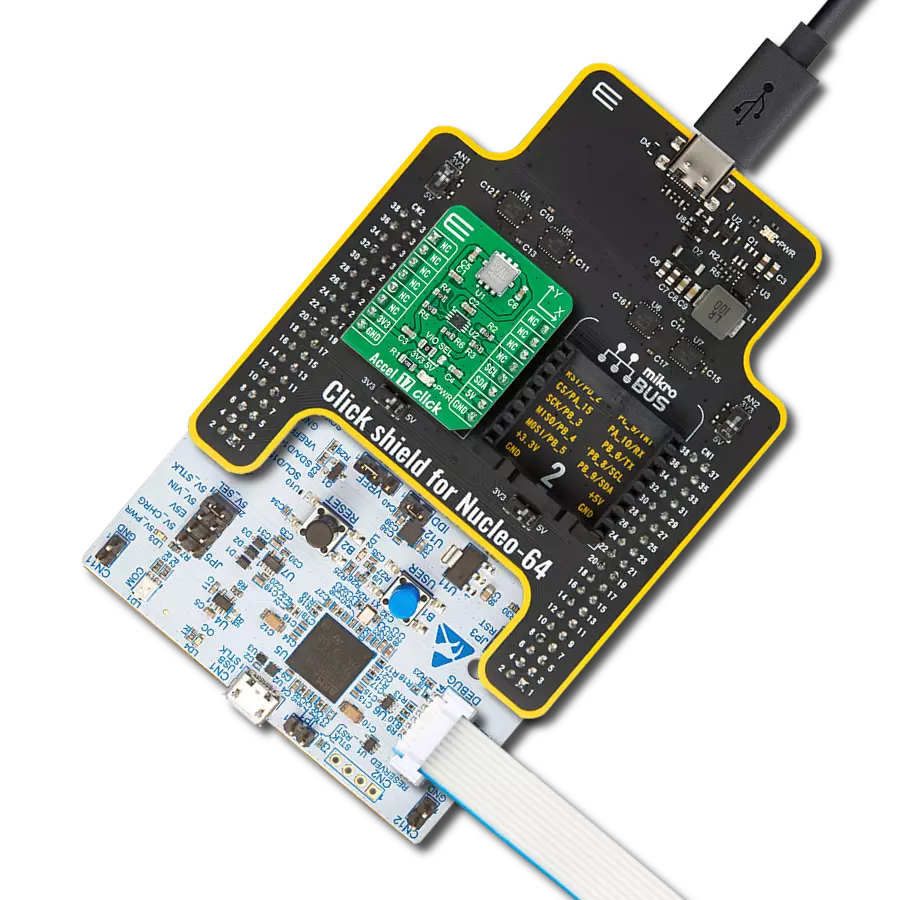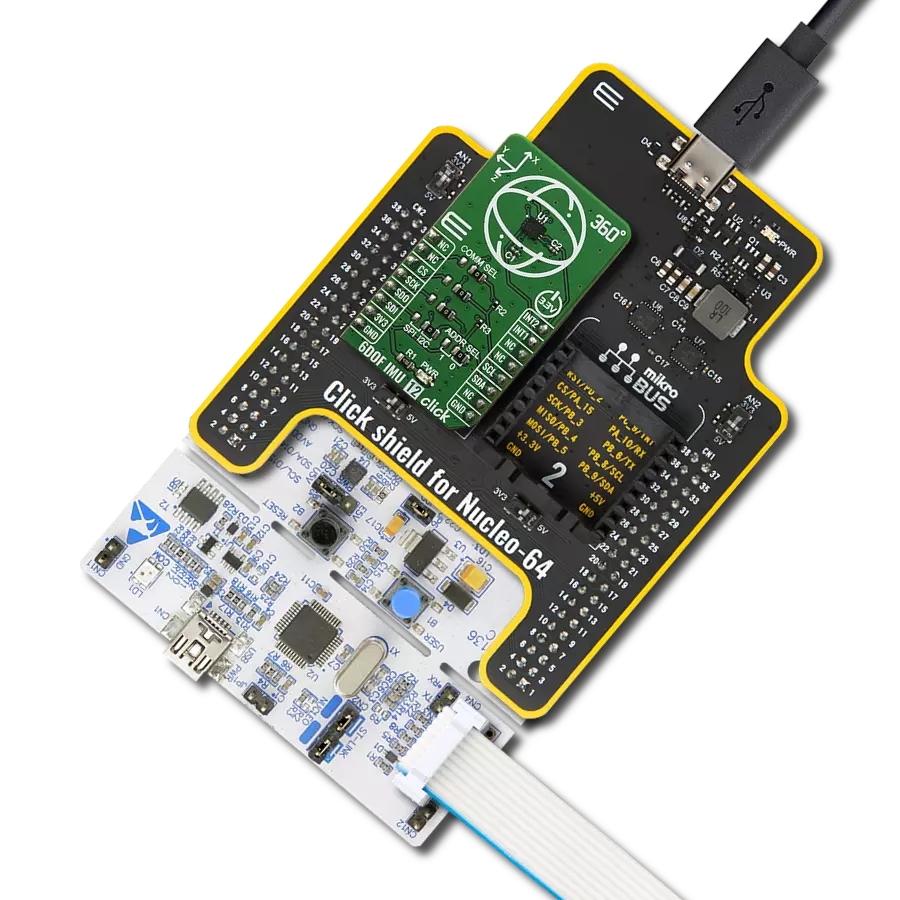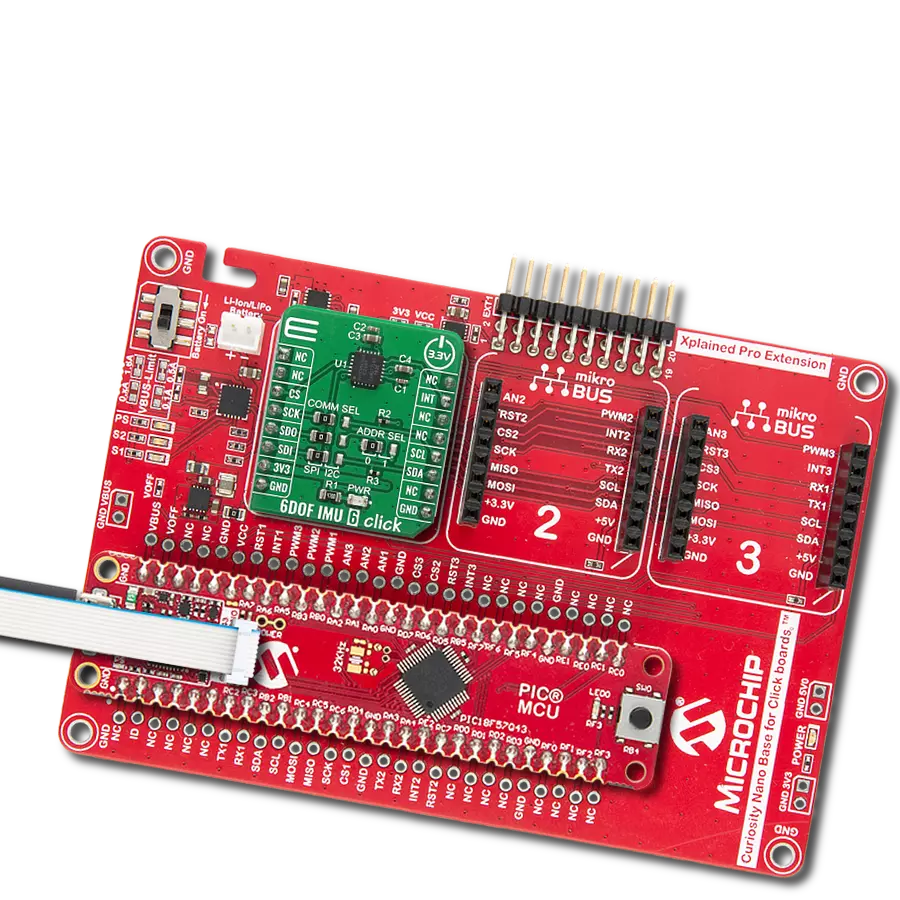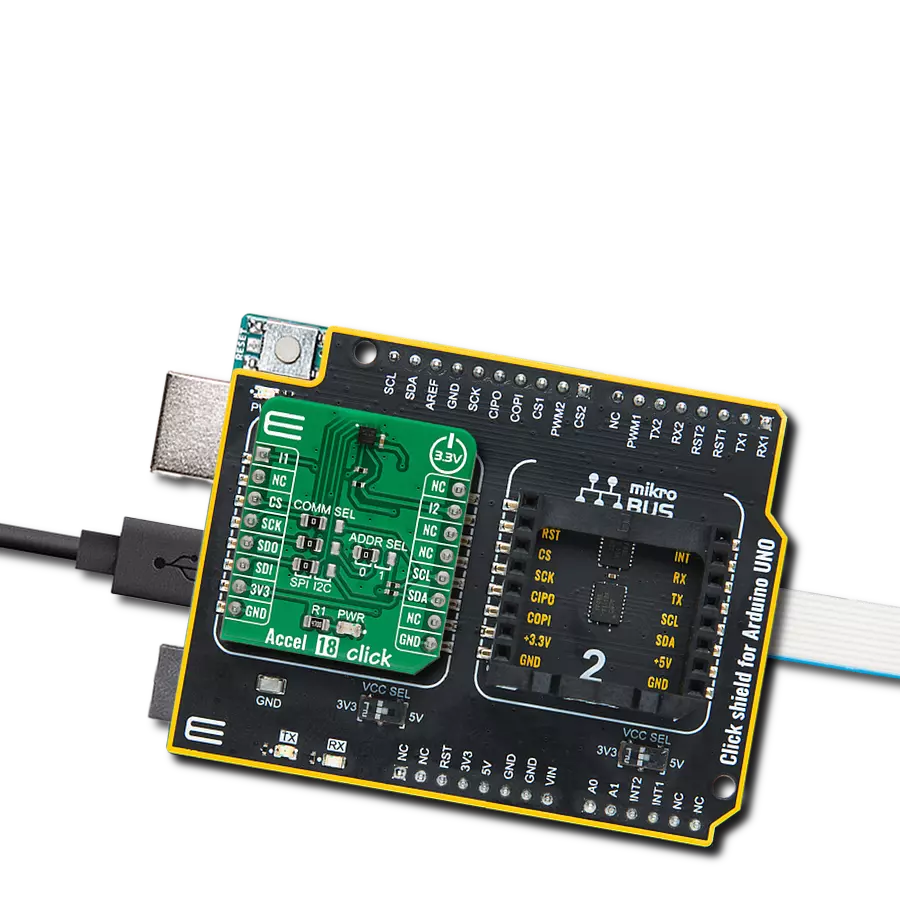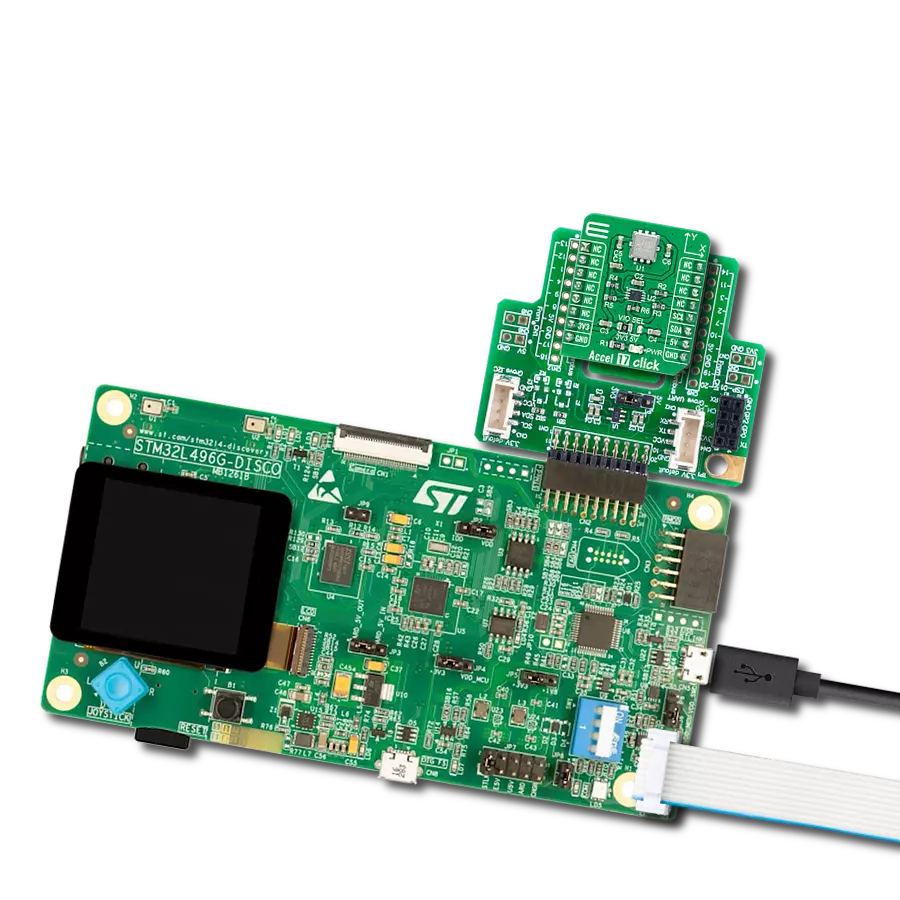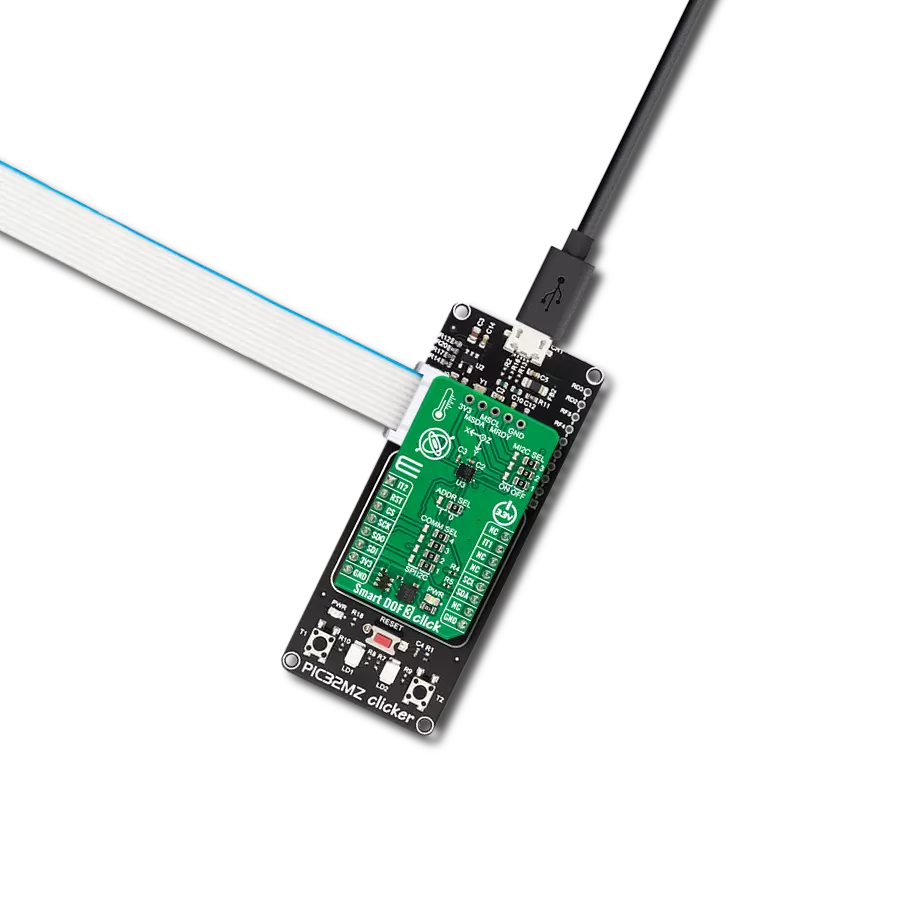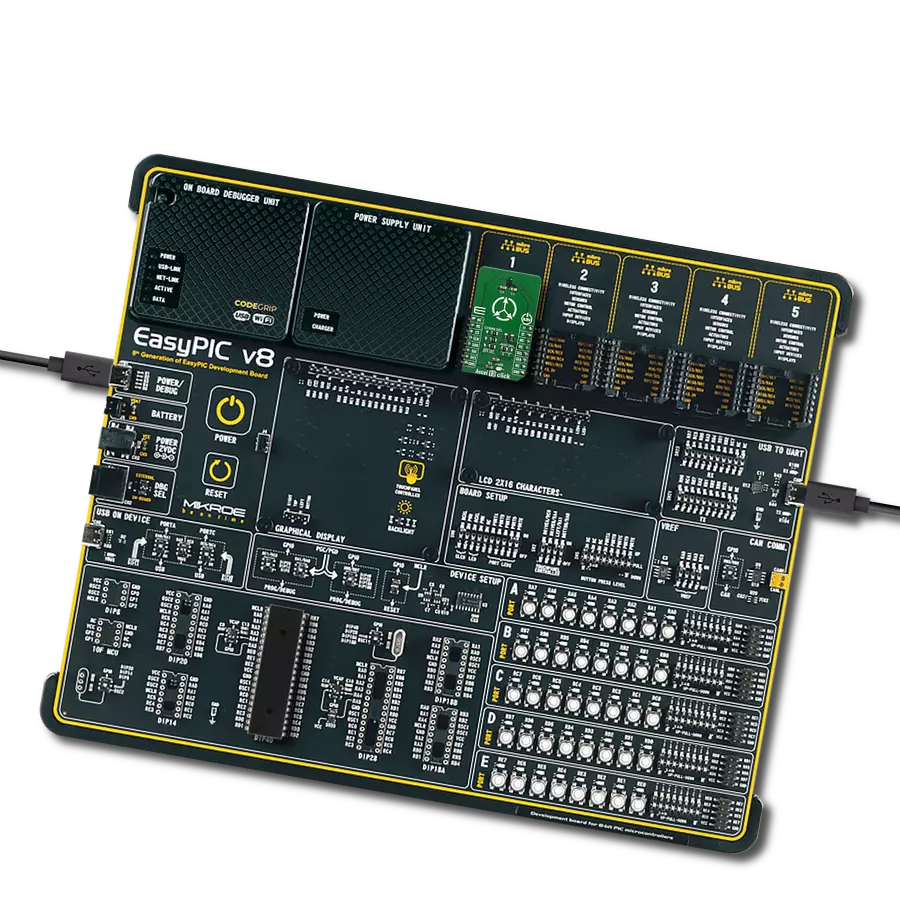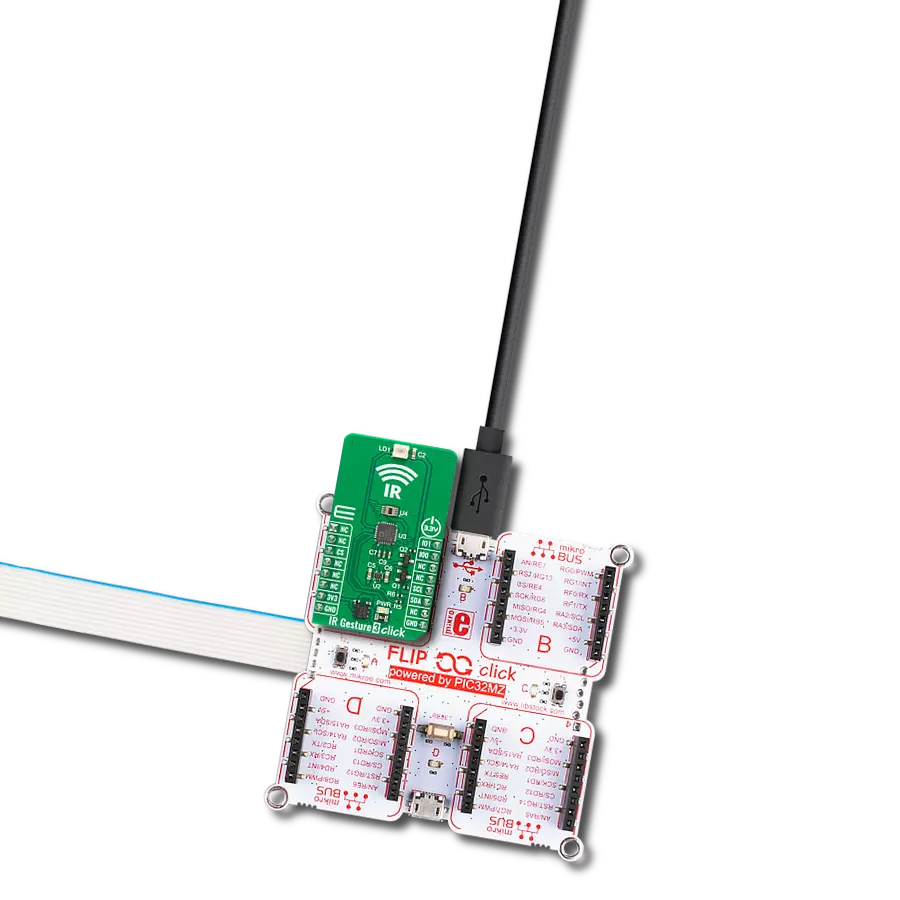Elevate your projects and enhance connectivity with our 3D accelerometer, ushering in an era of improved data accuracy and responsiveness
A
A
Hardware Overview
How does it work?
Accel 29 Click is based on the ADXL314, a complete three-axis ±200g acceleration measurement system from Analog Devices, operating at low power levels. The ADXL314 measures both dynamic accelerations resulting from motion or shock and static accelerations, such as gravity. It provides digital output data formatted as 16-bit, with acceleration reported digitally through a configurable and selectable serial interface. The ADXL314 automatically modulates its power consumption proportionately to its output data rate. If additional power savings are desired, it also offers lower power modes, enabling intelligent motion-based power management with threshold sensing and active acceleration measurement at low power dissipation. The ADXL314 is based on a polysilicon surface-micromachined structure built on top of a silicon wafer that suspends the
structure over the surface of the wafer, providing resistance against forces due to applied acceleration. Deflection of the structure is measured using differential capacitors that consist of independent fixed plates and plates attached to the moving mass. Acceleration deflects the proof mass and unbalances the differential capacitor, producing a sensor output whose amplitude is proportional to acceleration. Phase-sensitive demodulation is used to determine the magnitude and polarity of the acceleration. As mentioned, the acceleration data is accessed through the I2C or SPI interface with a maximum frequency of 400kHz for I2C and 5MHz for SPI communication. The selection is made by positioning SMD jumpers labeled COMM SEL appropriately. Note that all the jumpers' positions must be on the same side, or the Click board™
may become unresponsive. While the I2C interface is selected, the ADXL314 allows choosing the least significant bit (LSB) of its I2C slave address using the SMD jumper labeled ADDR SEL. This board also possesses two interrupts, IT1 and IT2, routed to, where, by default, the AN and IT pins stand on the mikroBUS™ socket, entirely programmed by the user through a serial interface. They signal MCU that a motion event has been sensed. This Click board™ can be operated only with a 3.3V logic voltage level. The board must perform appropriate logic voltage level conversion before using MCUs with different logic levels. Also, it comes equipped with a library containing functions and an example code that can be used as a reference for further development.
Features overview
Development board
PIC18F47K42 Curiosity Nano evaluation kit is a cutting-edge hardware platform designed to evaluate the PIC18F47K42 microcontroller (MCU). Central to its design is the inclusion of the powerful PIC18F47K42 microcontroller (MCU), offering advanced functionalities and robust performance. Key features of this evaluation kit include a yellow user LED and a responsive mechanical user switch
providing seamless interaction and testing. The provision for a 32.768kHz crystal footprint ensures precision timing capabilities. With an onboard debugger boasting a green power and status LED, programming and debugging become intuitive and efficient. Further enhancing its utility is the Virtual serial port (CDC) and a debug GPIO channel (DGI GPIO), offering extensive connectivity options.
Powered via USB, this kit boasts an adjustable target voltage feature facilitated by the MIC5353 LDO regulator, ensuring stable operation with an output voltage ranging from 2.3V to 5.1V (limited by USB input voltage), with a maximum output current of 500mA, subject to ambient temperature and voltage constraints.
Microcontroller Overview
MCU Card / MCU
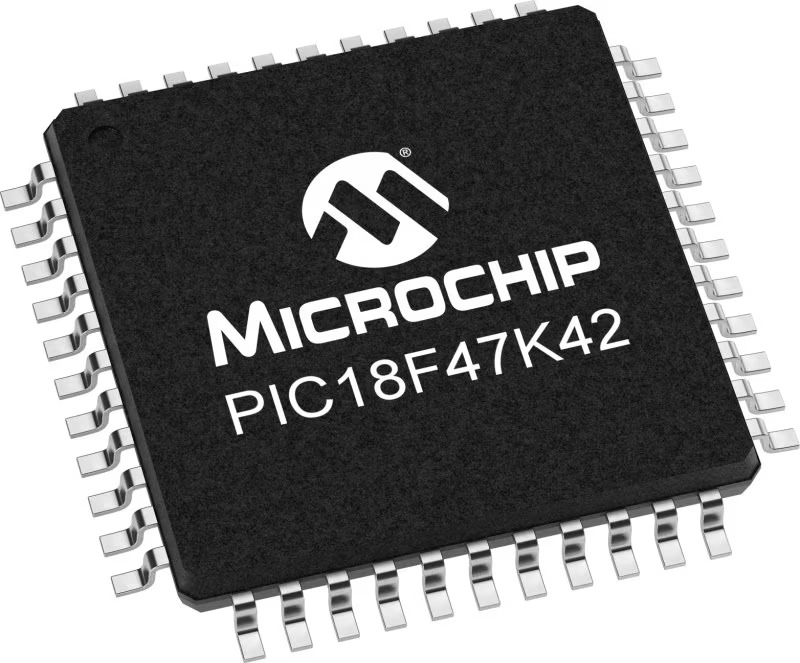
Architecture
PIC
MCU Memory (KB)
128
Silicon Vendor
Microchip
Pin count
40
RAM (Bytes)
8192
You complete me!
Accessories
Curiosity Nano Base for Click boards is a versatile hardware extension platform created to streamline the integration between Curiosity Nano kits and extension boards, tailored explicitly for the mikroBUS™-standardized Click boards and Xplained Pro extension boards. This innovative base board (shield) offers seamless connectivity and expansion possibilities, simplifying experimentation and development. Key features include USB power compatibility from the Curiosity Nano kit, alongside an alternative external power input option for enhanced flexibility. The onboard Li-Ion/LiPo charger and management circuit ensure smooth operation for battery-powered applications, simplifying usage and management. Moreover, the base incorporates a fixed 3.3V PSU dedicated to target and mikroBUS™ power rails, alongside a fixed 5.0V boost converter catering to 5V power rails of mikroBUS™ sockets, providing stable power delivery for various connected devices.
Used MCU Pins
mikroBUS™ mapper
Take a closer look
Click board™ Schematic
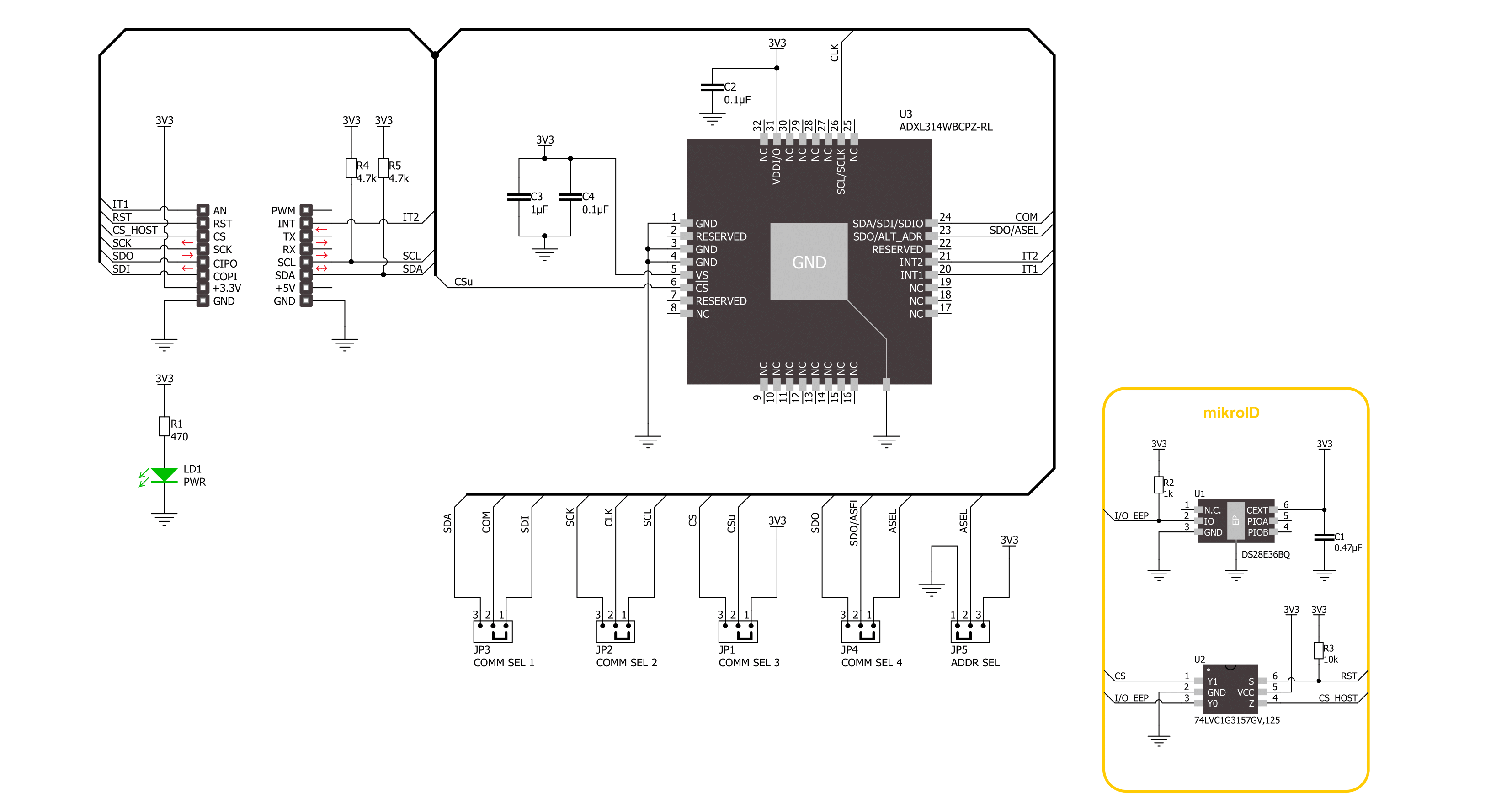
Step by step
Project assembly
Software Support
Library Description
This library contains API for Accel 29 Click driver.
Key functions:
accel29_calibrate_offset- This function calibrates accel offset to the specified values by setting the OFSX/Y/Z registersaccel29_get_avg_axes- This function reads a specified number of samples for accel X, Y, and Z axis data in g and averages them
Open Source
Code example
The complete application code and a ready-to-use project are available through the NECTO Studio Package Manager for direct installation in the NECTO Studio. The application code can also be found on the MIKROE GitHub account.
/*!
* @file main.c
* @brief Accel 29 Click example
*
* # Description
* This example demonstrates the use of Accel 29 Click board by reading and
* displaying the accelerometer data (X, Y, and Z axis) averaged from 100 samples.
*
* The demo application is composed of two sections :
*
* ## Application Init
* Initializes the driver, performs the Click default configuration, and calibrates
* the accel data offsets.
*
* ## Application Task
* Reads and displays on the USB UART the accelerometer data (X, Y, and Z axis)
* averaged from 100 samples.
*
* @note
* This Click board should be used for high g applications of up to +-200g.
* It is not recommended for low g applications because of its high scale
* factor which is about 48.83 mg per LSB.
*
* @author Stefan Filipovic
*
*/
#include "board.h"
#include "log.h"
#include "accel29.h"
/**
* Starting accel position, used for calibrating accel offset.
* Should be in a range from -24.96 to 24.765 g.
* Offset calibrating scale factor is 0.195 g per LSB.
*/
#define ACCEL29_CALIB_X 0.0f
#define ACCEL29_CALIB_Y 0.0f
#define ACCEL29_CALIB_Z 1.0f
static accel29_t accel29;
static log_t logger;
void application_init ( void )
{
log_cfg_t log_cfg; /**< Logger config object. */
accel29_cfg_t accel29_cfg; /**< Click config object. */
/**
* Logger initialization.
* Default baud rate: 115200
* Default log level: LOG_LEVEL_DEBUG
* @note If USB_UART_RX and USB_UART_TX
* are defined as HAL_PIN_NC, you will
* need to define them manually for log to work.
* See @b LOG_MAP_USB_UART macro definition for detailed explanation.
*/
LOG_MAP_USB_UART( log_cfg );
log_init( &logger, &log_cfg );
log_info( &logger, " Application Init " );
// Click initialization.
accel29_cfg_setup( &accel29_cfg );
ACCEL29_MAP_MIKROBUS( accel29_cfg, MIKROBUS_1 );
err_t init_flag = accel29_init( &accel29, &accel29_cfg );
if ( ( I2C_MASTER_ERROR == init_flag ) || ( SPI_MASTER_ERROR == init_flag ) )
{
log_error( &logger, " Communication init." );
for ( ; ; );
}
if ( ACCEL29_ERROR == accel29_default_cfg ( &accel29 ) )
{
log_error( &logger, " Default configuration." );
for ( ; ; );
}
accel29_axes_t calib_axes;
calib_axes.x = ACCEL29_CALIB_X;
calib_axes.y = ACCEL29_CALIB_Y;
calib_axes.z = ACCEL29_CALIB_Z;
if ( ACCEL29_ERROR == accel29_calibrate_offset ( &accel29, calib_axes ) )
{
log_error( &logger, " Calibrate offset." );
for ( ; ; );
}
log_info( &logger, " Application Task " );
}
void application_task ( void )
{
accel29_axes_t axes;
if ( ACCEL29_OK == accel29_get_avg_axes ( &accel29, ACCEL29_NUM_OF_SAMPLES, &axes ) )
{
log_printf( &logger, " X: %.1f g\r\n", axes.x );
log_printf( &logger, " Y: %.1f g\r\n", axes.y );
log_printf( &logger, " Z: %.1f g\r\n\n", axes.z );
}
}
int main ( void )
{
/* Do not remove this line or clock might not be set correctly. */
#ifdef PREINIT_SUPPORTED
preinit();
#endif
application_init( );
for ( ; ; )
{
application_task( );
}
return 0;
}
// ------------------------------------------------------------------------ END
Additional Support
Resources
Category:Motion



















